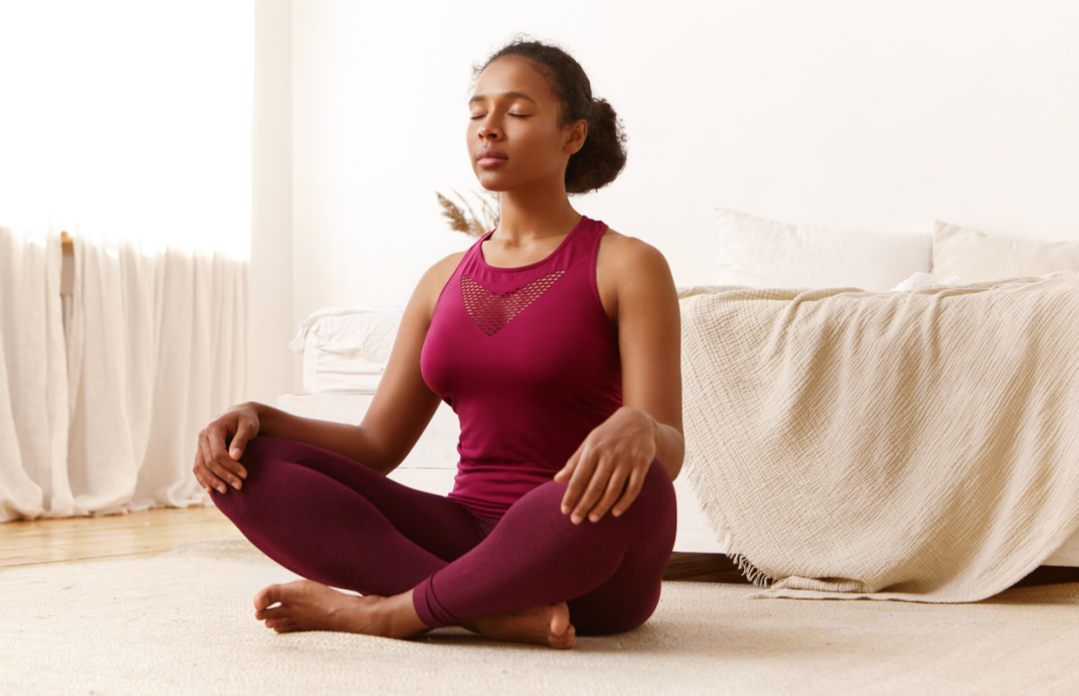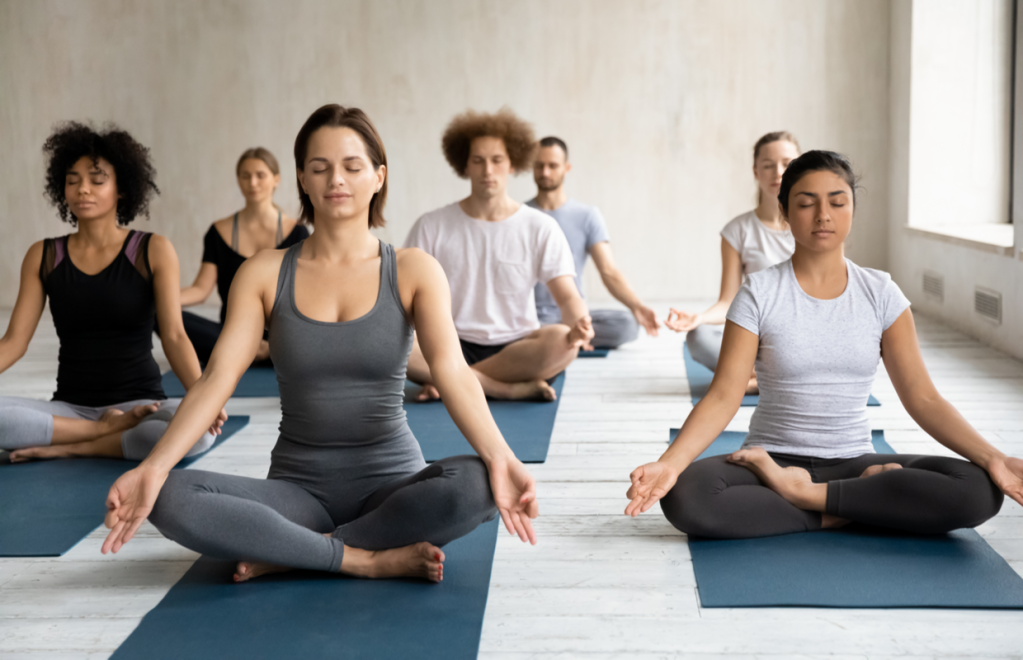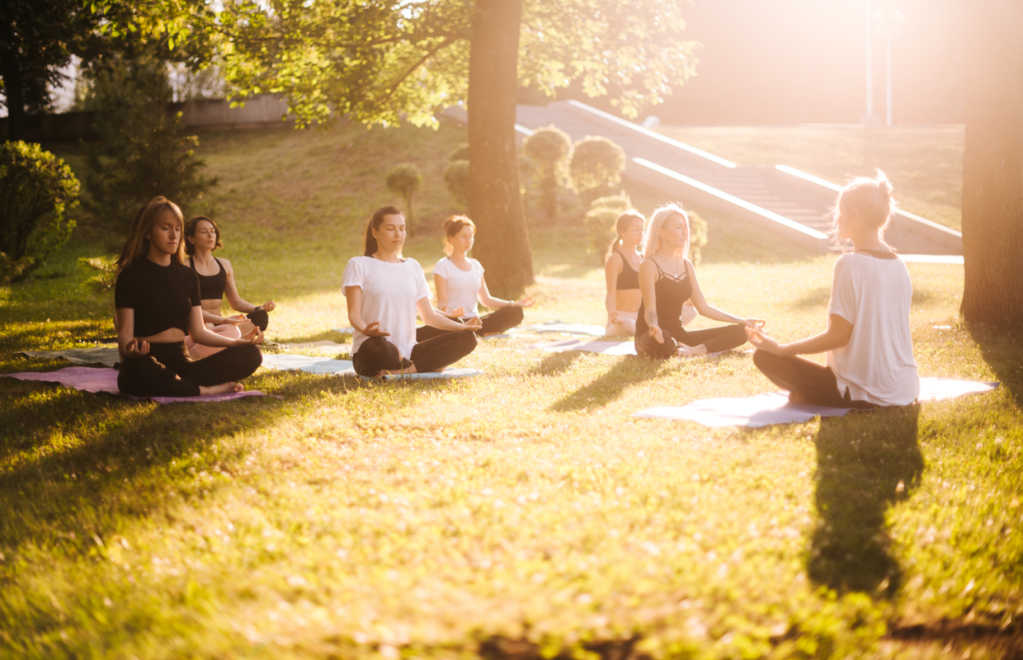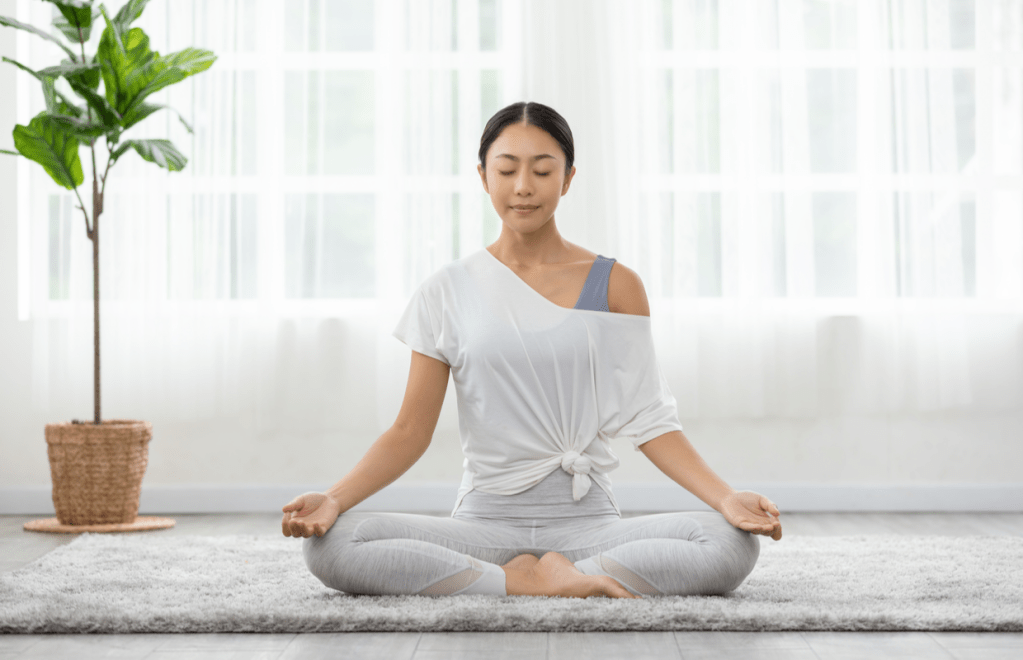Vedic meditation techniques to declutter your mind
Discover how Vedic meditation could be the key to a calmer, quieter mind...

In search of an uncluttered mind, self-confessed control freak Caroline Sylger Jones discovers a salve to the stress of modern living, and the joy of letting go. Here, she explains what Vedic meditation is, before sharing her advice for anyone looking to declutter their mind…
Checking my calendar, I do a double take. It’s now been over three months since I learnt Vedic meditation on a retreat. And every day since, without fail, I have managed to meditate twice a day, for 20 minutes each time, both morning and afternoon.
I’ve always loved the way I feel after meditation retreats of various kinds. Yet, on returning home, I have never been able to incorporate the process into my daily life. That is, until now.
‘The only thing you can do wrong when you meditate using this technique is to try,’ says my teacher, Jillian Lavender, co-founder of the London Meditation Centre and a leading expert in Vedic meditation.
‘There’s also no such thing as a bad meditation – except the ones you don’t do,’ she adds. As someone who tries hard too much of the time to get everything in life ‘right’, including meditation practices, this kind of thinking feels exactly why the method has been working for me. It’s easy –enjoyable even – and fits into normal life.

Why you need to learn Vedic meditation in-person
Learning Vedic meditation is simple and, yet, it’s a delicate and subtle process that is tailored to each individual. The teacher needs to meet with the student in person in order to assign the right mantra, and to ensure they are meditating correctly; Vedic meditation cannot be learned properly online or via an app.
Lavender and her partner, Michael Miller, teach Vedic meditation in person, either on short non-residential courses in London and New York, or on a sprinkling of beginners’ retreats at handpicked venues, such as Casa Fuzetta in Portugal – which is where I learnt.
Whichever you choose, the point is to bring the practice straight into your life, twice a day and every day, after your very first session. So, what is it?
What is Vedic meditation?
Vedic meditation is a 5000-year-old meditation practice, originating from India, that involves you sitting comfortably (whatever ‘comfy’ means to you – no compulsory crossed legs here), closing the eyes, and having a preference to think a sound (a mantra) to orient the mind towards quieter levels of thinking.
‘Your mind is always looking for whatever is most charming, and finds a mantra more charming than anything. It is like a vehicle that the mind hops onto and moves with, so you experience finer and finer layers of thinking,’ Lavender explains.
‘A point comes when the mantra then disappears and the mind falls quiet. This is a state of pure inner contentedness, where the mind is alert, but with no thoughts going on’. In this state, your de-excited system experiences a profound level of rest, deeper than sleep. This enables you to release your stress and exhaustion, and re-emerge to re-engage with life in a more skillful way.

Experience a Vedic meditation retreat
Lavender began our retreat with a short and simple ceremony, in honour of the lineage of teachers who have passed this knowledge down over thousands of years. We were then each given our mantras individually.
The mantras, Lavender informed us, had been chosen from a selection of sounds, for their resonance to suit our mind-body physiology, our life stage, and the state of the world. We were told to keep them private, because ‘their power is in the subtle’.
We then meditated together, simply by closing our eyes and ‘picking up the mantra’, as Lavender called it; her language was straightforward, yet precisely chosen, and this helped us learn quickly and easily.
‘Have a preference to think the mantra, but nothing more,’ she told us. ‘Work lightly with it – take it as it comes. Don’t attach to how you say it, how often, or whether it’s in rhythm with your breath or anything else.’
After 20 minutes, Lavender instructed us to stop thinking the mantra, but to keep our eyes closed, so that we came out of our meditation slowly. A few minutes on, we opened our eyes and, just like that, we were meditators.
Progressing on your Vedic meditation journey
During the course of the retreat, we meditated together again, and also alone, all the while getting tips from Lavender about how and when to meditate once back home. We also listened to inspirational talks outlining why to bother.
I forgot my mantra on my second group session, and panicked – but no matter. After a check-in with Lavender, when I was reminded of it – reassured that it was a natural part of the process – I picked it up again easily.
Throughout the retreat, I continued to be amazed that so simple a task could offer me such a feeling of deep rest. As someone attracted to decluttering in every possible way, it’s this simplicity that resonates with me.

Vipassana verses Vedic meditation
Until now, I’ve mainly experienced the Buddhist art of Vipassana meditation. During this, you focus on the in and out breath to calm your monkey mind. I’ve always left retreats of this nature feeling smoother, calmer, and more at one with myself and the world. However, it’s only with Vedic meditation that I’ve been able to keep up the practice at home, alone.
Now, in the mornings when I wake, I’m often genuinely excited that, after sitting up in bed, sipping water and closing my eyes, I gently think my mantra for 20 minutes to steady and ready myself for the day ahead.
And, in the afternoons, I actively look forward to the same closed space of rest and calm, when I can climb inside my mind, pick up my mantra, re-energise and reclaim myself again.
How Vedic meditation declutters the mind
So what’s going on? As we experienced over the four days of our retreat, each meditation session shifts continually and is often packed with thoughts. But rather than trying to do something about these thoughts during the meditation – such as taking our focus back to the breath – all we need to do is ‘have a preference for picking up the mantra’, and be reassured that any thoughts are in fact the byproduct of meditation, and a sign that everything is working.
‘Thoughts are a result of release of stress, and so a thought-filled meditation is a valuable meditation, in which lots of stress has been released,’ explains Lavender. During the retreat – and for a week or two after – I felt exhausted. This, I was assured, was my body releasing an accumulation of tiredness, too.
As time goes on, we get to release the deeper body stress and tiredness inside us – going back years. Most profoundly, by meditating twice a day, we are then releasing stress faster than we gain it.
Stay in charge of your stress
‘There is no such thing as a stressful situation. Yes – situations can be very demanding and challenging. However, it’s how we adapt to these demands that determines whether we gain stress or not,’ says Lavender. If we are stressed and tired, we cannot adapt, which is why we get negatively stressed. ‘The antidote to stress is deep rest – it’s that simple.’
Once you give your system this regular and profound rest through Vedic meditation, you will be more able to be in the present and respond appropriately to any given situation. To focus, but also to see the bigger picture. To trust yourself, and to make better decisions based on your gut rather than your head.

Let go of control
Meditation, in fact, is a masterclass in letting go of control. This is another reason why the technique appeals to me, a self-confessed control freak. ‘Change is the one constant in life. But, we all use control to feel safe when we cannot adapt to it,’ says Lavender.
Trying to control things is exhausting and costly, and the very opposite of evolution. This is why, when you’ve been meditating for a while, you notice how the wrong things start to fall away. Whether that’s a toxic relationship or a preference for reaching for wine rather than something more nourishing.
Only three months on, and I am no longer beating myself up for saying ‘no’ if I don’t want to go out somewhere. I’m feeling better for any decision I make for myself that means I’ll get better sleep, more family time, or more creative time for myself.
Continuing your Vedic meditation journey at home
Over the course of our retreat, we refined the technique and understood more of its effects. Plus, we also learnt tips for how and when to meditate once we were back at home. But Lavender and Miller don’t just leave it there. Their aftercare is a crucial part of the process. It may well have made the difference between my carrying on or not.
Each week, I am sent a Meditator’s Map email with a short video or paragraph offering useful and reassuring tips to help you keep going. Plus, every Wednesday evening there’s an optional live online session. For this, the couple explores a life issue then leads a group meditation.
As this is crucial family time for us at home, and I have found the optimum time for my afternoon meditation is more like 3.30pm, I don’t attend these live. But, I always listen back to them and find them enlightening.
Cleverly pivoting on a question from a meditator, they cover everything from relationships to socialising, to how to respond to a crisis such as the war in Ukraine. They have become to me supportive and reassuring guidelines on how to deal with being human.
The Beatles and Vedic meditation
Ultimately, Vedic meditation is, as The Beatles knew, a practice that moves the practitioner beyond activity and thought to pure transcendental consciousness. Or, what some meditators call ‘the unified field’.
‘This is a fourth state of restful alertness, different to waking, sleeping or dreaming’, explains Lavender, ‘in which we and everything around us are connected, and we are no longer suffering from our separateness’. It can take a few years to reach this state, she adds. I for one am looking forward to the journey.

5 tips to optimise your Vedic meditation practice
- Meditate on an empty tummy, ideally before drinking caffeine or alcohol.
- Meditate for 20 minutes, twice a day – no more, no less. Unless you are travelling, pregnant, or recovering from an illness.
- Come out of your meditation slowly. Let go of the mantra, but keep your eyes closed for three minutes further.
- When you plan your meditations, they’re more likely to happen. So when you finish your morning meditation, decide where and when you will meditate that afternoon. Then, do the same during your afternoon meditation.
- Know you can meditate anywhere where you can sit comfortably and safely close your eyes. This could be on trains or planes, at home or at work, in the loo or on a park bench.
For details of the London Meditation Centre beginners’ courses and retreats, visit londonmeditationcentre.com. For more ideas on meditation retreats, visit queenofretreats.com.
More inspiration: Mantra meditation for anxiety – how to find clarity and control
Words: Caroline Sylger Jones | Images: Shutterstock






